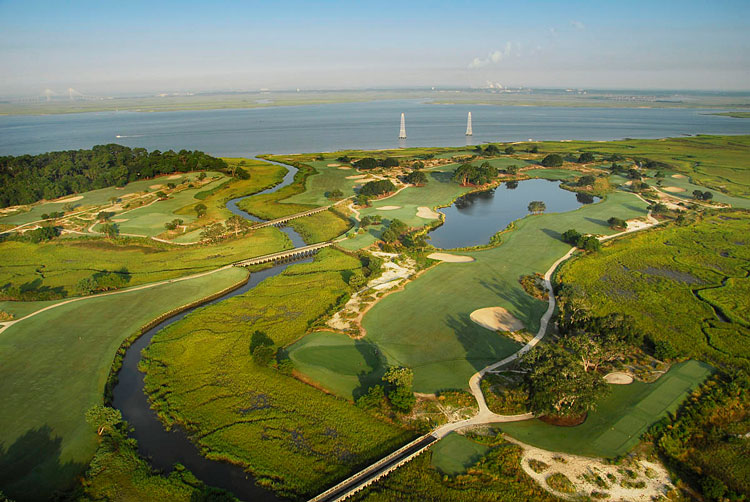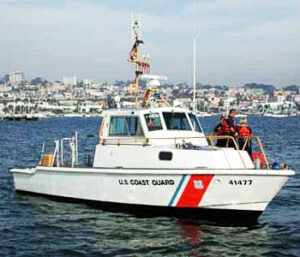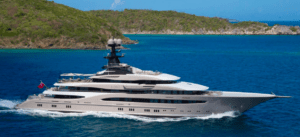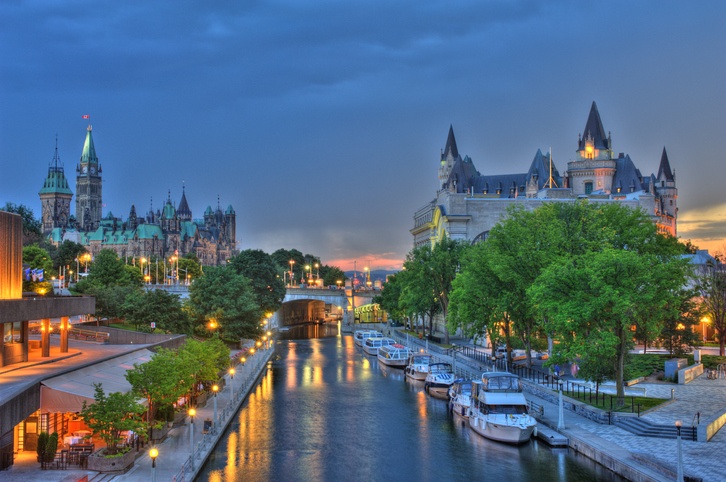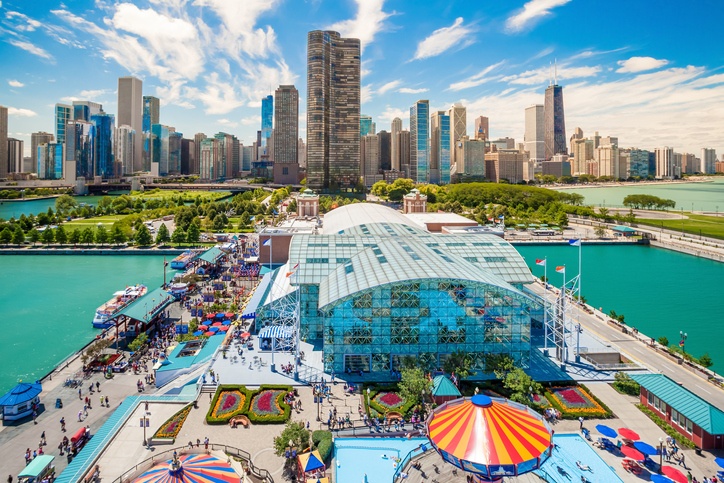Navigating Georgia’s Tidal Marshlands – St. Simons Island in the Golden Isles

Estimated reading time: 12 minutes – SBFL* Stop 37 – Planned – If you’ve been following our planning for the Slow Boat to Florida (SBFL) adventure, you know it’s shaping up to be quite the journey. It’s certainly going to be slow—very slow. For us, the entire journey is the destination, not just Florida.
We originally planned to kick off in October 2020, but like many, Covid derailed our plans. We’ve been working on kickstarting our eight-month trip, but things have changed since the pandemic. However, that hasn’t stopped our dream or the continuation of our planning. For those just tuning in, welcome aboard!
In our plans, we’re taking our time virtually cruising down the Atlantic Intracoastal Waterway (ICW), savoring every beautiful stop along the way. For Stop 37 on the ICW, we’re heading to a favorite spot for many ICW travelers: St. Simons Island, Georgia.
We recently left the charming town of Richmond Hill, Georgia, and made a stop at New Teakettle Creek. Now, we’re making our way further south. As we navigate the ICW, the scenery begins to change—lush marshlands, winding waterways, and the tantalizing scent of the sea beckon us forward. St. Simons Island is nestled among the Golden Isles, a stunning group of barrier islands that includes Sea Island, Little St. Simons Island, and Jekyll Island. But today, it’s all about St. Simons!
Docking at St. Simons Island
As you approach St. Simons Island from the north, you’ll pass through some truly picturesque waters. The ICW here is lined with tall grasses and dotted with small islands, creating a serene and peaceful atmosphere. Keep your eyes peeled for wildlife—herons, egrets, and even the occasional dolphin are common sights.
St. Simons Island offers several great spots for docking. The Morningstar Marina at Golden Isles is a popular choice, offering excellent facilities and a friendly, helpful staff. You’ll find everything you need there, from fuel and water to showers and laundry. Once you’re all set, it’s time to explore! The comedy legend Oliver Hardy, one half of the famous Laurel and Hardy duo, spent part of his childhood on St. Simons Island. There is a historical marker on the island commemorating his connection to the area. Eugenia Price, a beloved author known for her historical novels set in the American South, lived on St. Simons Island for many years. Her St. Simons Trilogy, which includes the novels Lighthouse, New Moon Rising, and The Beloved Invader, is based on the island’s history and people. St. Simons Island and the surrounding area have become popular among professional golfers as well. Davis Love III, a PGA Tour golfer and 1997 PGA Championship winner, resides on the island. Other notable golfers like Zach Johnson and Matt Kuchar also have connections to the island.
Hunting for Tree Spirits
Scattered across St. Simons Island, you’ll find a series of intricate carvings known as the Tree Spirits. These whimsical faces are carved into the trunks of live oak trees, creating a unique and delightful treasure hunt for visitors and locals alike.
The Tree Spirits were created by local artist Keith Jennings starting in the early 1980s. Jennings began carving these faces into the trees as a way to capture the spirit and history of the island. Each carving is unique, with its own personality and expression, adding a touch of mystery and enchantment to the island’s landscape.
According to local legend, the Tree Spirits represent the souls of sailors who lost their lives at sea. While this adds a touch of folklore, the carvings themselves are more about celebrating the island’s natural beauty and artistic spirit. Over the years, the Tree Spirits have become a beloved part of the island’s culture, with locals often pointing out their favorite carvings and sharing stories about them.
They are a testament to the island’s artistic community and its ability to blend natural beauty with human creativity. Whether you set out on a dedicated hunt or simply enjoy discovering them along the way, the Tree Spirits provide a delightful and memorable experience for all ages.
So, next time you’re on St. Simons Island, keep your eyes peeled for these delightful carvings—they’re sure to bring a smile to your face and add a bit of magic to your island adventure.
Uncovering the Golden Isles’ past
St. Simons Island, part of Georgia’s Golden Isles, boasts a rich and varied history, from its early Native American inhabitants to its present-day status as a popular destination for tourists and residents alike. Long before European settlers arrived, St. Simons Island was home to Native American tribes. The Timucua and the Guale people lived in the region, thriving on the island’s abundant resources. Archaeological evidence, such as shell middens and pottery shards, provides a glimpse into their way of life.
In the 16th century, Spanish explorers arrived on the Georgia coast. The Spanish established missions on the island as part of their efforts to convert the native Guale people to Christianity. One of the most significant missions was San Buenaventura de Guadalquini, founded in the late 1500s. However, by the mid-1600s, conflicts with the British and pirate raids led to the decline of Spanish influence in the area.
The British began to colonize the area in the early 18th century. General James Oglethorpe, the founder of the colony of Georgia, established Fort Frederica on St. Simons Island in 1736. The fort served as a military outpost to protect the southern boundary of the British colonies from Spanish Florida. The Battle of Bloody Marsh, fought in 1742, saw Oglethorpe’s forces successfully repel a Spanish invasion, securing Georgia for the British.
Following the American Revolution, St. Simons Island transitioned to an agricultural economy. Large cotton plantations dominated the landscape, and enslaved Africans were brought to the island to work the fields. The cultivation of Sea Island cotton, known for its long, silky fibers, brought considerable wealth to the island’s plantation owners. The remnants of this era can still be seen at sites like the Hamilton Plantation and the Horton House.
Another historic site not to miss is the iconic St. Simons Lighthouse. This historic lighthouse, built in 1872, stands tall and proud, still guiding sailors safely to shore. It’s a sight that instantly makes you feel like you’ve stepped back in time. The Keeper’s Dwelling housed lighthouse keepers from 1872 until the 1950s. Today, it’s the site of the Lighthouse Museum, with interactive exhibits, rare artifacts, and period rooms with displays on the island’s history and the life of a lighthouse keeper.
In the 20th century, St. Simons Island evolved into a popular vacation destination. The construction of the Torras Causeway in 1924 connected the island to the mainland, making it more accessible to visitors. The island’s natural beauty, historical sites, and recreational opportunities continue to attract tourists from around the world.
Today, St. Simons Island seamlessly blends its historical charm with modern amenities. Visitors can explore its scenic beaches, enjoy outdoor activities such as golfing and fishing, and delve into its storied past through museums and historic sites. The island’s vibrant culture, friendly community, and picturesque landscapes make it a beloved destination for both residents and tourists.
What did our inspirational couple do?
When Dorothea and Stuart Jones of National Geographic, our source of inspiration, arrived on the island in 1958, they wrote: “At St. Simons Island, Tradewinds’ crew (Tradewinds was their sailboat’s name) broke out shore clothes, smelling somewhat of mildew and bilge, and headed for neighboring Sea Island and 48 hours of soft living at the Cloister, a luxurious resort hotel.” Well, the resort is still there and as luxurious as ever.
They continued, “We arrived in time for the weekly fish fry, held by the light of fat-pine torches in a live-oak grove, with a Negro chorus softly singing folk songs and spirituals. Hotel guests came in a train of rubber-tired carts pulled by a jeep. Featured was shrimp mull, a spicy dish made from a secret recipe.”
They also went to the nearby Jekyll Island. The Joneses wrote, “A different kind of history was unfolded for us on Jekyll Island, across St. Simons Sound. Here, for 56 years, was the secluded retreat of the wealthiest men in the United States. The Jekyll Island Club’s roster of 100 included such names as Rockefeller, Vanderbilt, Harriman, Pulitzer, McCormick, and Morgan. During Jekyll’s heyday, members arrived shortly after Christmas each year, many in their own yachts, and remained until early spring.
Occasionally, the outside world reached in to touch Jekyll. A notable instance was that of January 25, 1915, when Dr. Alexander Graham Bell’s telephone carried the first trans-continental conversation. Principals in that historic event were Dr. Bell himself, in New York City, and his associate, Thomas A. Watson, in San Francisco. In Washington, DC, President Woodrow Wilson listened in with officials of the National Geographic Society. Another participant was Theodore N. Vail, first president of the American Telephone and Telegraph Company. Mr. Vail planned to join Dr. Bell in New York for the ceremony, but lameness resulting from a fall detained him at Jekyll. Accordingly, an additional 1,000 miles of wire were included in the hookup so Mr. Vail might listen as Dr. Bell spoke to Mr. Watson across the continent.”
Savoring the flavors of the island
One of the best-known and highly acclaimed restaurants on St. Simons Island is Georgia Sea Grill. This restaurant is often regarded as a five-star dining experience due to its exceptional cuisine, elegant ambiance, and top-notch service.
The interior of Georgia Sea Grill is both cozy and refined, with a welcoming atmosphere that makes it suitable for both intimate dinners and larger gatherings. The decor reflects the coastal charm of St. Simons Island, creating a delightful dining environment.
Whether you’re a local resident or a visitor to St. Simons Island, Georgia Sea Grill promises a memorable dining experience that captures the essence of coastal Georgia cuisine.
However, if you want to eat like the locals and experience a true local favorite, head over to Southern Soul Barbeque for a taste of authentic Southern BBQ that’s sure to satisfy. This hidden gem is beloved by residents for its authentic Southern barbecue, laid-back atmosphere, and friendly service. Southern Soul Barbeque has a rustic, down-home feel with a welcoming, no-frills atmosphere. It’s the kind of place where you can relax, enjoy great food, and feel like part of the community. The staff is friendly and the service is efficient, adding to the overall positive experience.
Indulge in Luxury
St. Simons Island offers a variety of hotels and resorts, ranging from budget-friendly options to luxurious five-star accommodations. Their price ranges from $120 to $2,000 a night. Budget-friendly options are $120 – $250, mid-range options are $150 – $400, and luxury options are $500 – $2,000 plus, per night.
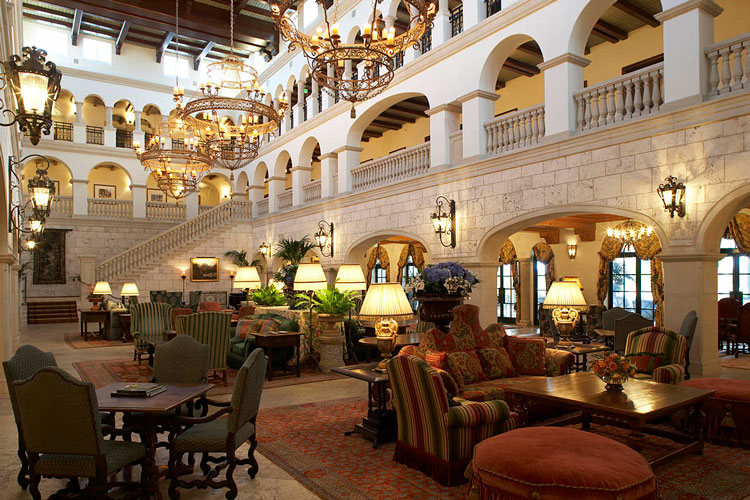
One of the best hotels and resorts is The Cloister on neighboring Sea Island. The resort is set amid lush landscapes, with meticulously maintained gardens, serene river views, and easy access to the pristine beaches of Sea Island. Renowned for its luxurious accommodations, top-notch amenities, and stunning location, The Cloister offers an exceptional experience for visitors seeking a high-end stay.
It features elegant rooms, suites, and private cottages, each beautifully appointed with luxurious furnishings and modern amenities. Many rooms offer stunning views of the river, ocean, or lush gardens. In addition, they have world-class amenities in their dining room, spa, golf course, and fitness center. Recreational activities include The Cloister Beach Club that provides access to a private beach, multiple swimming pools, and water sports activities such as kayaking and paddleboarding. The resort has top-notch tennis facilities, including Har-Tru clay courts and professional instruction. Guests can also experience clay target shooting at the Sea Island Shooting School, with expert guidance available.
Well, that’s it for now. Stay well. I hope to say hello to you if you spot my boat, Life’s AOK, in one of the locations that I’m hoping to visit in 2024.
I bid you Fair Winds and Following Seas.
Cover photo: One of the best hotels and resorts is The Cloister on neighboring Sea Island, adjacent to St. Simons Island, Georgia. Photo courtesy of The Cloister.
3 things I learned
Tree Spirits
You, too, can have fun and a whimsical treasure hunt. Finding the Tree Spirits has become a fun activity for families and visitors of the island. There are maps available at local shops and visitor centers that mark the general locations of some of these carvings, but part of the fun is stumbling upon them unexpectedly
Example of Tree Spirits Locations:
- Gascoigne Bluff: A popular spot where several Tree Spirits can be found.
- Mallery Park: Another location where you can discover these hidden faces.
- Private Residences and Businesses: Some Tree Spirits are located on private properties, so they can often be spotted unexpectedly as you explore the island.
Exploring St. Simons Island
St. Simons Island is a treasure trove of activities and sights, perfect for any pleasure boater looking to unwind and have some fun. They are: St. Simons Lighthouse Museum, Neptune Park, Pier Village, Beaches, Fort Frederica National Monument, and the Maritime Center at the Historic Coast Guard Station. The Pier Village is the heart of St. Simons Island, bustling with shops, restaurants, and cafes. Stroll along the pier, enjoy some ice cream, or grab a bite to eat at one of the local seafood joints. The laid-back atmosphere is perfect for unwinding after a day on the water. For history buffs, a visit to Fort Frederica is a must. This well-preserved fort dates back to the 18th century and offers a fascinating glimpse into the island’s colonial past. Wander through the ruins and imagine what life was like for the early settlers.
Airport
The island has a private airport in the center, accommodating small private airplanes.
2 things I recommend
Georgia Sea Grill
- Fresh Seafood: The restaurant specializes in locally sourced, fresh seafood dishes. Their menu features a variety of expertly prepared seafood options, reflecting the rich coastal flavors of the region.
- Farm-to-Table: Georgia Sea Grill is committed to using locally sourced ingredients, ensuring that each dish is fresh and supports local farmers and fishermen.
- Elegant Atmosphere: The restaurant offers a sophisticated yet relaxed dining environment, perfect for special occasions or a memorable night out.
- Extensive Wine List: They boast an impressive wine list, carefully curated to complement their menu offerings.
- Exceptional Service: The staff is known for their attentive and friendly service, enhancing the overall dining experience.
Southern Soul Barbeque
- Authentic BBQ: Southern Soul Barbeque is renowned for its mouthwatering smoked meats, including ribs, pulled pork, brisket, and sausage. The flavors are rich and the portions generous.
- Casual and Friendly Atmosphere: The vibe is relaxed and welcoming, making it a favorite spot for both locals and visitors who do discover it.
- Outdoor Seating: The restaurant offers a casual outdoor seating area where patrons can enjoy their meals in the pleasant Georgia weather.
- Award-Winning: Southern Soul Barbeque has received numerous accolades and has been featured on several food shows, making it a must-try for BBQ enthusiasts.
- Local Craft Beers: They offer a selection of local craft beers that pair perfectly with their BBQ dishes.
How easy?

Marinas where you can stay overnight or longer
St. Simons Island offers two marinas that cater to boaters with a range of amenities and services. They are: Morningstar Marinas at Golden Isles, and St. Simons Marina.
The Ultimate Marina Experience
Morningstar Marinas at Golden Isles is often regarded as the best marina on St. Simons Island due to its combination of excellent amenities, convenient location, and top-notch service. The marina’s deep-water access from the ICW makes it ideal for transient boaters looking for a hassle-free stopover. The presence of The Coastal Kitchen restaurant adds a touch of luxury, allowing boaters to enjoy fine dining without leaving the marina. The well-maintained facilities and attentive staff ensure a comfortable and enjoyable stay, making it a five-star experience for visitors. It is a full-service marina offering a range of amenities for both transient and long-term boaters.
Highlights:
- Deep Water Access: The marina provides easy deep-water access from the ICW, making it convenient for larger vessels.
- Excellent Facilities: Boaters can take advantage of high-quality facilities, including a fuel dock, pump-out station, and well-maintained restrooms and showers.
- On-Site Restaurant: The marina features an on-site restaurant, The Coastal Kitchen, where you can enjoy a meal with a view of the water.
- Boat Services: They offer boat maintenance and repair services, ensuring your vessel is in top condition.
Amenities:
- Fuel dock (gas and diesel)
- Pump-out station
- Clean restrooms and showers
- Laundry facilities
- Wi-Fi access
- 24-hour security
- On-site restaurant (The Coastal Kitchen)
- Picnic areas with grills
- Boater’s lounge
- Courtesy bikes for exploring the island
*SBFL stands for Slow Boat to Florida. Each numbered heading has two parts. The first is “Planned or Planning to Visit,” and when we visit the planned location, a “Visited” label appears at the beginning, next to SBFL. Join us on our journey of discovery along the Atlantic Intracoastal Waterway (ICW)! We’re taking you with us, through our blog “Trips of Discovery,” as we follow in the footsteps of three National Geographic editors – Dorothea and Stuart E. Jones and Allan C. Fisher, Jr. In this series, we’ll show you the past, present, and a glimpse into the future, as we compare and contrast the locations visited by the Joneses (1958 National Geographic article, “Slow Boat to Florida”) and Fisher (1973 book, “America’s Inland Waterway”), respectively. But don’t worry, we’ll add our own personal touch by sharing our observations and interviews with local residents during our visits. In this series, we’ll take you to some of the most historic and charming spots along the ICW and share our personal observations and experiences. Who knows, you might even be inspired to plan your own adventure!

